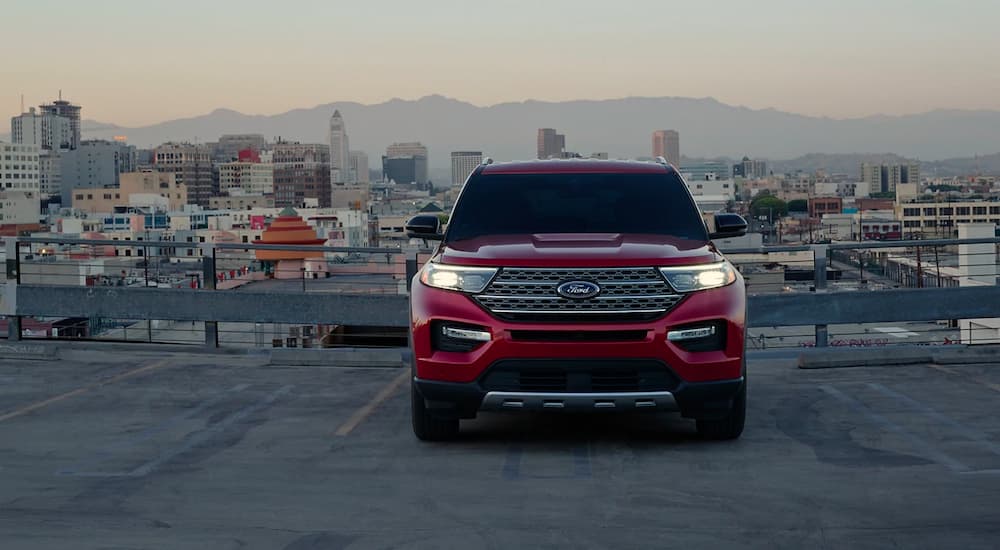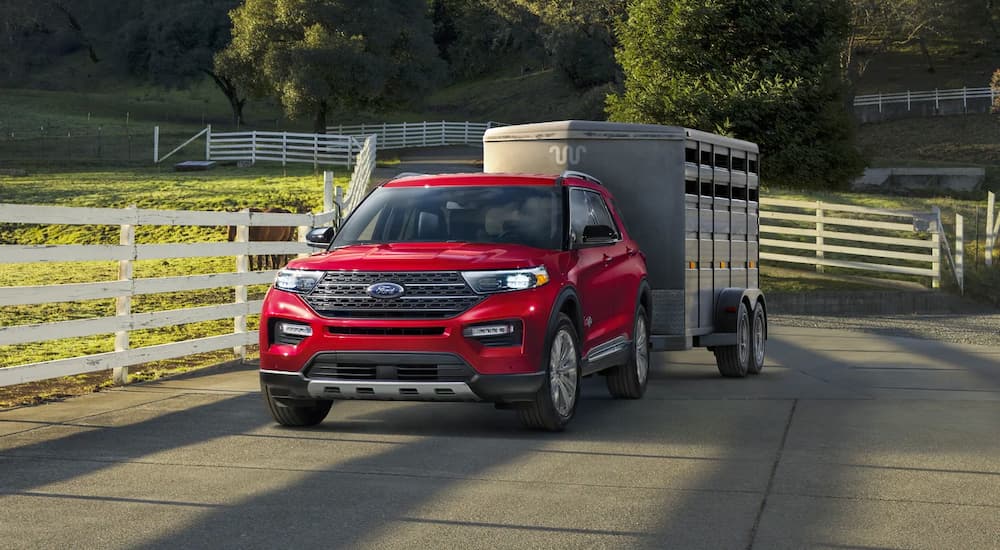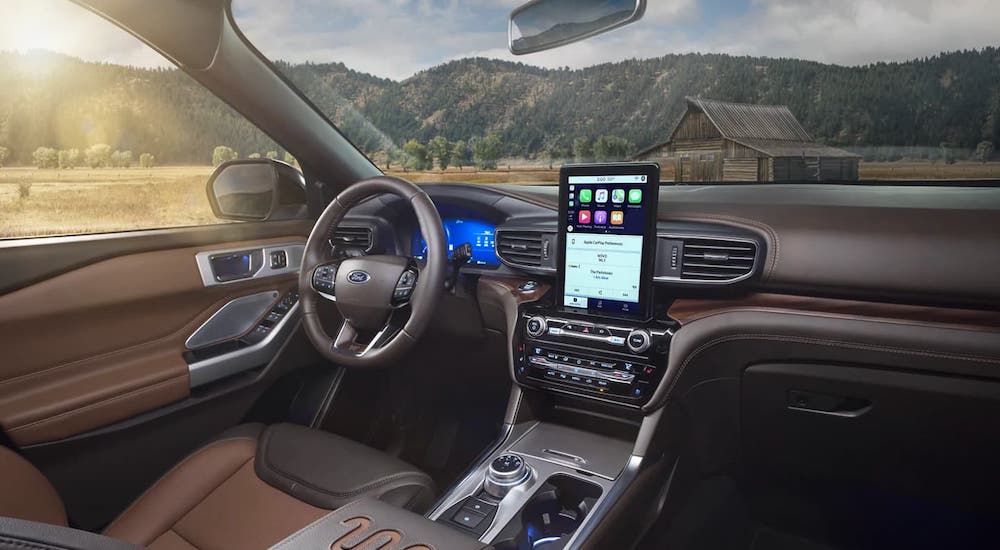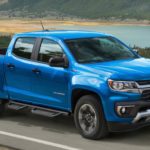A common question people ask is, “what is the best Ford to buy,” and the answer is simply the Ford Explorer. Who doesn’t love the Ford Explorer? This iconic SUV has its roots in the earliest stages of the SUV and crossover movement. The Explorer was cool before SUVs were cool, and because of that, this mid-size SUV has earned street credibility as a pioneer in the ultra-popular crossover segment. Fans will be happy to learn that the 2021 version further cements the Explorer’s legacy. If you’re looking to add a new SUV to your family fleet, google “Ford dealer near me” and make plans to check out the newest Explorer.
There’s a lot to discover in Ford’s latest Explorer model. Starting with a very affordable starting price of $32,225 and seating for 7, this SUV continues to capture hearts while remaining a practical option, as it has since its original launch way back in 1990. Over the years, the Explorer hasn’t lost what makes it so special. Sure, styling has evolved, but what remains is the adventurous, slightly boxy (in a good way), and aggressive exterior curb appeal.
The best legacies are threaded through with consistency. In the case of the Explorer, early versions foretold its place in automotive history. In 30 years of production, Ford has never abandoned its vision for the Explorer as a family vehicle that delivered adventure and rugged style and – most importantly – did not resemble a minivan at all. How did the Explorer trigger an SUV movement? How did it all begin? Let’s explore the Explorer’s place in SUV and crossover innovation.
History of the SUV
Early SUVs were essentially pickup trucks without a bed. Most, like the Explorer, sat on truck platforms – a Ranger platform in the Explorer’s case – and delivered a very truck-like ride. These early SUV iterations were the auto industry’s first response to growing consumer dissatisfaction with minivans. Some manufacturers earned favor with families almost accidentally, but Ford intentionally targeted this underserved segment with the Explorer.
How did it begin? Moms everywhere lamented abandoning style for family utility but grudgingly acquiesced to function over form and added a minivan to their driveways. With the dip in pride of ownership, manufacturers saw an opportunity: build a similarly-sized vehicle with seating for seven that rode like a car but looked like a truck. Add a dash of adventure, and families would bite. Enter the Explorer.
Although Jeep’s Cherokee and Chevy’s Blazer already existed in the category, neither company targeted moms in quite the same intentional way as Ford did. Industry experts agreed. The first-generation Explorer would go on to define the SUV segment and maintain a position at the top for the years that followed.
As with any trend, some ‘early adopter’ moms who refused to cave to the minivan discovered this segment on their own, but a strong marketing push geared to young families is what ignited the crossover SUV’s popularity. The Explorer was meant to put style back into the functional family vehicle, and this idea proved to be the right move. The category has exploded since the first-generation was released, and many auto manufacturers, like Buick, are ditching sedans and exclusively producing crossover body style vehicles. When was the tipping point? 2015. That’s when SUVs first outsold sedans, and the industry has never looked back.
2021 Explorer Overview
What does the pioneer of it all look like today? A more refined and modern version of itself, with echoes of its predecessors. Ford’s intentional effort to maintain a foundational design throughout each new generation is evident on this newest model year Explorer, which is what makes it so special.
For 2021, Ford continues to offer a hybrid trim to the delight of buyers looking for optimal fuel economy and a smaller carbon footprint. This hybrid Explorer is unique, offering the same 5,000-pound towing capacity and off-roading capability as its gas-powered siblings, and sips gas instead of guzzling it in the process.
Tech is everywhere, thanks to an available 10.1-inch infotainment touchscreen and Ford’s innovative SYNC 3 operating system. The system is Amazon Alexa-compatible and dialed into Waze navigation for easy turn-by-turn directions and voice prompts. There’s also an available wireless charging pad and 4G LTE Wi-Fi Hotspot, Apple CarPlay and Android Auto connectivity, and a 14-speaker premium audio system by Bose.
Safety is also prominent as all 2021 Explorers come equipped with Ford’s Co-Pilot360 suite of driver-assist safety systems. These include blind spot monitoring, lane-keeping assist, automatic emergency braking, auto high-beam headlights, and a rearview camera to make backing out of parking spaces stress-free. Truly upgraded to match the times, the Ford Explorer continues to deliver the style and function that people desire.
2021 Explorer Trim Highlights
If you’re looking to dial in a more specialized Explorer, you’re in luck. For 2021, Ford offers two highly upgraded trims designed for buyers looking to up the ante on luxury and performance. Ford understands that just because families need a people mover, they aren’t willing to abandon core vehicle capabilities to get there.
If luxury is your goal, look no further than the Explorer Platinum. With a wallet-dinging starting price tag of $54,480, you should expect a lot of bells and whistles, and Ford delivers. Plush tri-diamond leather seating with special accent stitching, an available twin-panel moonroof, and voice-activated touchscreen navigation start off the features of this luxurious Explorer trim. A standard 12-speaker Bang and Olufsen system is also standard.
What if power and performance are high on your list? Check out the Explorer ST. At $52,605, the ST is powered by Ford’s highly efficient turbocharged 3.0-liter EcoBoost engine that typically delivers 365 horsepower and 380 lb-ft of torque. Thanks to special tuning for the ST, Ford increases performance to 400 horsepower and 415 lb-ft of torque. The ST reaches a top speed of 143 mph, which is illegal on highways in America, but legal to boast about to friends.
With these two special trims, Ford envelops luxury and performance buyers into its already expansive buyer demographic while still keeping the Explorer affordable for more budget-minded shoppers. Even the base model Explorer is feature-rich, with seating for seven and a rear-wheel drive powertrain (intelligent all-wheel drive is optional) that delivers a sportier ride.
The Best of Ford
What keeps us coming back to the Explorer again and again is Ford’s uncompromising commitment to maintaining its original intent: deliver a family vehicle that offers rugged good looks and plenty of style. While the minivan slowly fades away, what’s left is a landscape of SUVs and crossovers that serve today’s busy families. In 2021, competition is stiff. Ford has to work a little harder to keep the Explorer relevant as it faces an onslaught of competitive vehicles that are catching the eye of buyers. To do this, Ford must aggressively maintain the original intent of its design, capitalize on the legacy it has built, and remain committed to the Explorer’s evolution.
If you’re shopping for a very reliable and tech-loaded mid-size SUV, we recommend taking a closer look at the 2021 Ford Explorer. At all price points and across the entire trim range, we think the Explorer still sets the standard for all SUVs. The SUV that helped pave the way for the automobile market as we know it today, the Ford Explorer is definitely the best Ford model to buy.






